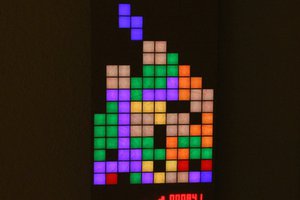Setup (please see https://github.com/RoGeorge/DS1054Z_screen_capture for the latest instructions):
- For Windows, install Python 2.7.12 from https://www.python.org/downloads. Python is already installed in Ubuntu.
- Download and unzip DS1054Z_screen_capture
- Install pillow imaging library. Installation steps are in the README.md file.
- Connect together the computer and the oscilloscope (by LAN).
- To capture an image from the oscilloscope display and save it to the computer disk, open a Command Prompt or a Terminal, then run OscScreenGrabLAN.py
Example:
python OscScreenGrabLAN.py png 192.168.1.3

WYSIWYG:
You can capture exactly what is seen on the oscilloscope display, including oscilloscope menus:

3D Printing AVR Arduino Art Audio Automation BeagleBone Bluetooth Cameras Clock Drones Environment Hardware IoT LED Medical Music Radio Raspberry Pi Remote Control Robotics Rockets Satellites Science Security Software Virtual Reality Wearables
 RoGeorge
RoGeorge








 trueffelwurm
trueffelwurm
 Keerat Singh
Keerat Singh
 Keith
Keith
 makeTVee
makeTVee
Man this is fantastic, especially considered how dang slow these scopes are at saving PNGs to flash drives (mine has taken ~5 minutes sometimes ¯\_(ツ)_/¯ ). I was going to go write a script of my own, then found yours which is super nicely polished and way better than what I would have made :). Thanks a million - you saved me a ton of time!
A few notes:
I noticed you don't say anywhere that it's been tested on a mac - it has now! I followed your installation instructions and got it working *almost* with no problems. I had to comment out "log_running_python_versions()" to prevent an error with pip.get_installed_distributions(). If you're interested DM me and I can give you more info. I'd also be happy to test any fixes if you don't have a mac handy and are interested in making it macOS friendly.
I was using a DS1074Z Plus. The 'plus' in the name threw off the scope model checker code you've got, prompting the program to warn that no DS1000Z series scope was detected. It's super easy to get past because of the option to ignore the warning, but you could add a check for "plus" models too. I added this "plus" case to my copy of your code and it works great!